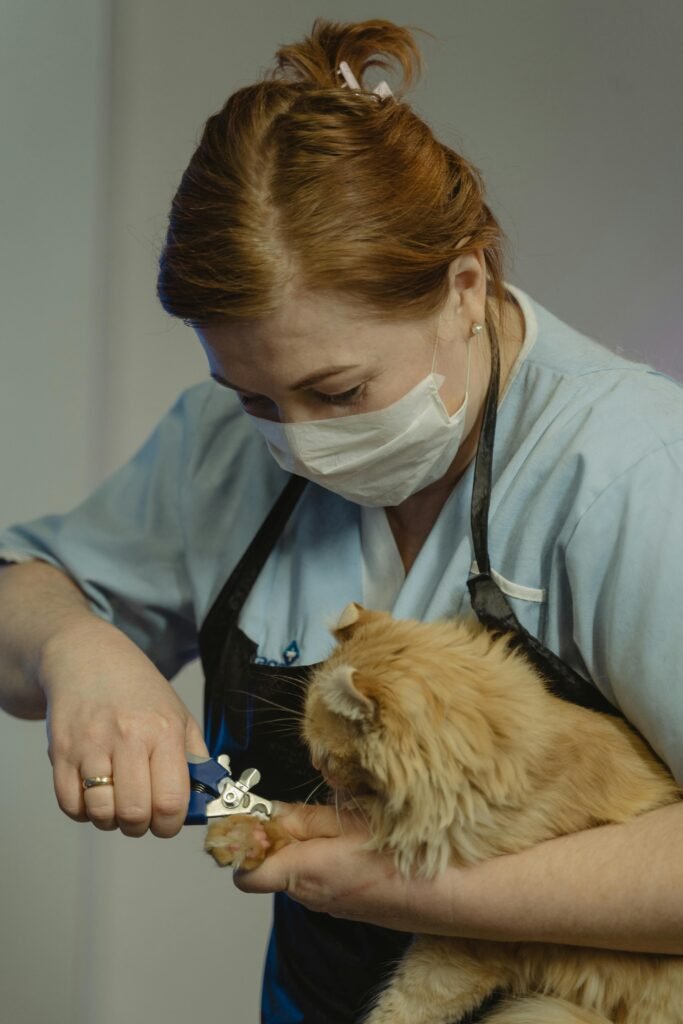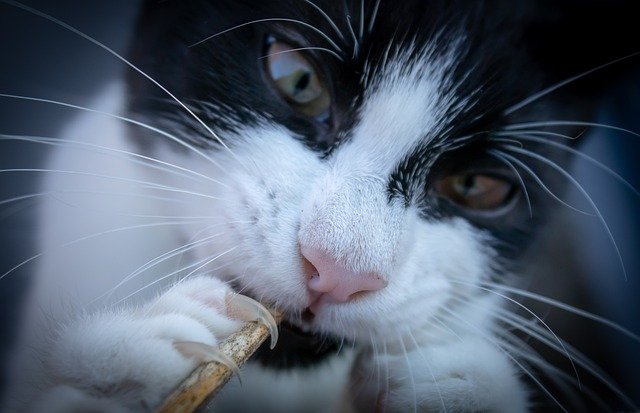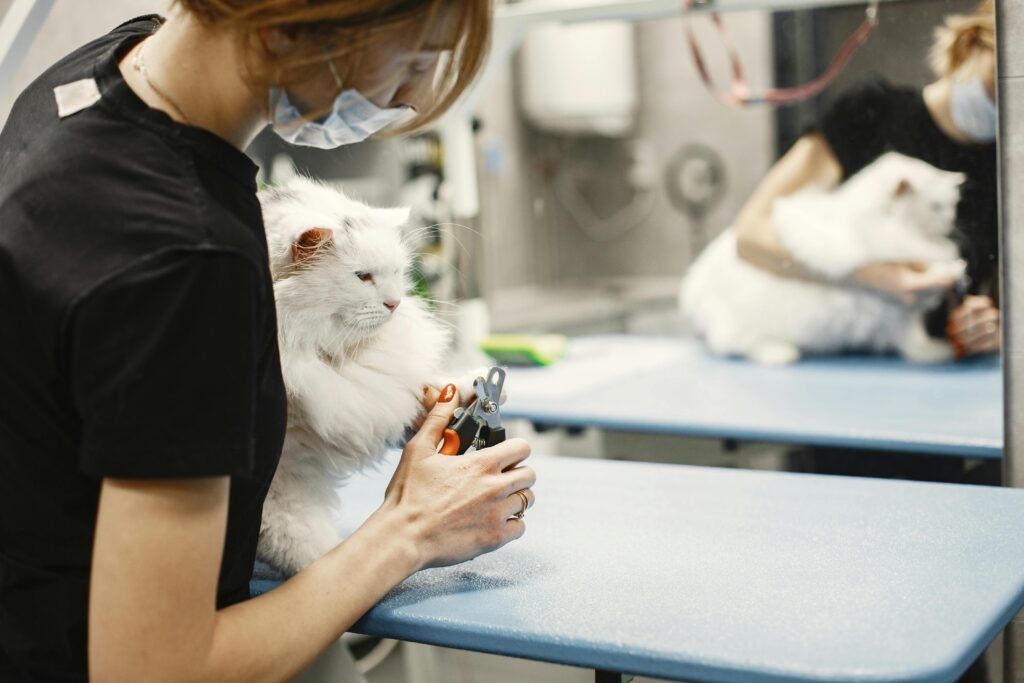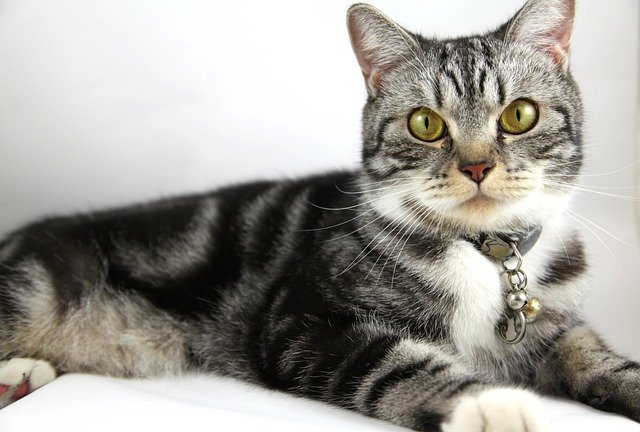what is declaw cat?
Declaw cat, also known as onychectomy, is a surgical procedure where the cat’s claws, along with the last bone of each toe, are removed. This procedure is usually performed to prevent cats from scratching furniture, people, or other pets. However, declawing is a controversial practice with significant ethical concerns.

advantages of declaw cat
It’s important to clarify that declawing a cat is a controversial procedure with significant ethical concerns and potential negative consequences for the cat’s physical and emotional well-being. However, to provide a balanced perspective, here are some arguments that have been put forth as potential advantages of declawing:
- Preventing Damage: Declaw cat may prevent from scratching furniture, carpets, and other household items. For some cat owners, particularly those who rent their homes or have expensive furnishings, this may be seen as an advantage.
- Reducing Injury Risk: Declaw cat may reduce the risk of injury to humans or other pets from a cat’s scratching behavior. Cats’ claws can cause scratches and puncture wounds, which may become infected or require medical treatment.
- Managing Allergies: Some individuals may be allergic to cat scratches or may have compromised immune systems, making them more susceptible to infections from cat scratches. Declaw cat could potentially reduce the risk of allergic reactions or infections in these cases.
- Easing Behavioral Issues: In some cases, declawing may be considered as a last resort to address severe behavioral problems related to scratching, such as aggression or destructive behavior. However, it’s essential to explore alternative behavioral modification techniques before resorting to declawing.
- Household Harmony: For households with multiple pets, declaw cat might prevent conflicts or injuries between cats or between cats and other animals in the household.

It’s crucial to note that these perceived advantages must be weighed against the ethical considerations and potential risks associated with declawing. Many veterinarians, animal welfare organizations, and cat owners advocate against declaw cat due to its negative impact on cats’ physical health, behavior, and overall well-being. Consulting with a veterinarian or animal behaviorist can provide guidance on addressing scratching behavior in cats without resorting to declawing.
Disadvantages of Declaw Cat
Certainly, there are numerous disadvantages and potential consequences associated with declaw cat. It’s essential to consider these factors carefully before making a decision about declawing. Here are some of the primary disadvantages:
- Pain and Discomfort: Declawing is a painful surgical procedure that involves the amputation of the last bone of each toe. Cats may experience significant pain during and after the surgery, and the recovery period can be prolonged and uncomfortable.
- Physical Consequences: Declawing can lead to long-term physical problems for cats, including lameness, arthritis, and chronic pain. Removing the claws alters the cat’s anatomy and can affect their ability to walk, jump, and balance properly.
- Behavioral Changes: Declaw cat can cause significant behavioral changes in cats. Cats may become more fearful, anxious, or aggressive after declawing. They may also develop litter box aversion or other behavioral problems as a result of the pain and stress associated with the procedure.
- Loss of Defense: Claws are essential for a cat’s ability to defend themselves and escape from danger. Declawed cats are more vulnerable to attacks from other animals and may struggle to defend themselves in threatening situations.
- Inability to Engage in Natural Behaviors: Scratching is a natural behavior for cats that serves several purposes, including maintaining claw health, stretching muscles, and marking territory. Declawed cats are unable to engage in these natural behaviors, which can lead to frustration and behavioral problems.
- Negative Impact on Human-Animal Bond: Declawing can damage the bond between a cat and their owner. Cats may associate their owner with the pain and discomfort of the declawing procedure, leading to trust issues and a breakdown in the human-animal relationship.
- Ethical Concerns: Many veterinarians, animal welfare organizations, and cat owners consider declawing to be a form of mutilation and a violation of animal welfare principles. Declawing is banned or heavily restricted in several countries and regions due to ethical concerns.
- Legal and Social Implications: Declawing is increasingly viewed as unacceptable by society, and there may be legal or social consequences for individuals or organizations that perform or advocate for declawing.
Alternatives to Declawing
There are several humane alternatives to declawing that can effectively address scratching behavior in cats. These alternatives focus on providing outlets for natural scratching instincts and managing the behavior in a positive manner. Here are some alternatives:

- Provide Scratching Posts or Pads: Offer your cat a variety of scratching posts or pads made from different materials, such as sisal rope, cardboard, or carpet. Place them in multiple locations throughout your home, including near areas where your cat likes to scratch.
- Nail Trimming: Regularly trim your cat’s nails to keep them blunt and less damaging. Use pet-specific nail clippers or scissors and be careful not to cut into the quick (the pink part inside the nail that contains blood vessels and nerves).
- Scratching Deterrents: Use double-sided tape, aluminum foil, or commercial deterrent sprays on surfaces you want to protect from scratching. Cats typically dislike the texture or smell of these materials and may avoid scratching them.
- Nail Caps: Consider using soft nail caps, such as Soft Paws or Soft Claws, which are applied over your cat’s claws to prevent scratching damage. These caps are non-toxic and temporary, requiring replacement every few weeks as the cat’s nails grow.
- Positive Reinforcement: Encourage your cat to use appropriate scratching surfaces by rewarding them with treats, praise, or playtime when they use the scratching posts or pads. Positive reinforcement helps reinforce the desired behavior.
- Vertical Scratching Surfaces: Cats often prefer to scratch vertically, so provide tall, sturdy scratching posts or trees that allow them to stretch and scratch at different heights.
- Horizontal Scratching Surfaces: Some cats prefer to scratch horizontally, so offer flat scratching pads or cardboard scratchers that mimic the feel of scratching on the ground.
- Environmental Enrichment: Ensure your cat has an enriched environment with plenty of opportunities for mental and physical stimulation. Provide toys, interactive play sessions, climbing structures, and hiding spots to keep your cat engaged and content.
- Address Underlying Issues: Scratching behavior can sometimes be a sign of stress, boredom, or territorial marking. Address any underlying issues, such as changes in the household, lack of stimulation, or conflicts with other pets, to help reduce inappropriate scratching.
By implementing these alternatives, you can effectively manage your cat’s scratching behavior without resorting to declawing, promoting their physical and emotional well-being while preserving your furniture and belongings.



